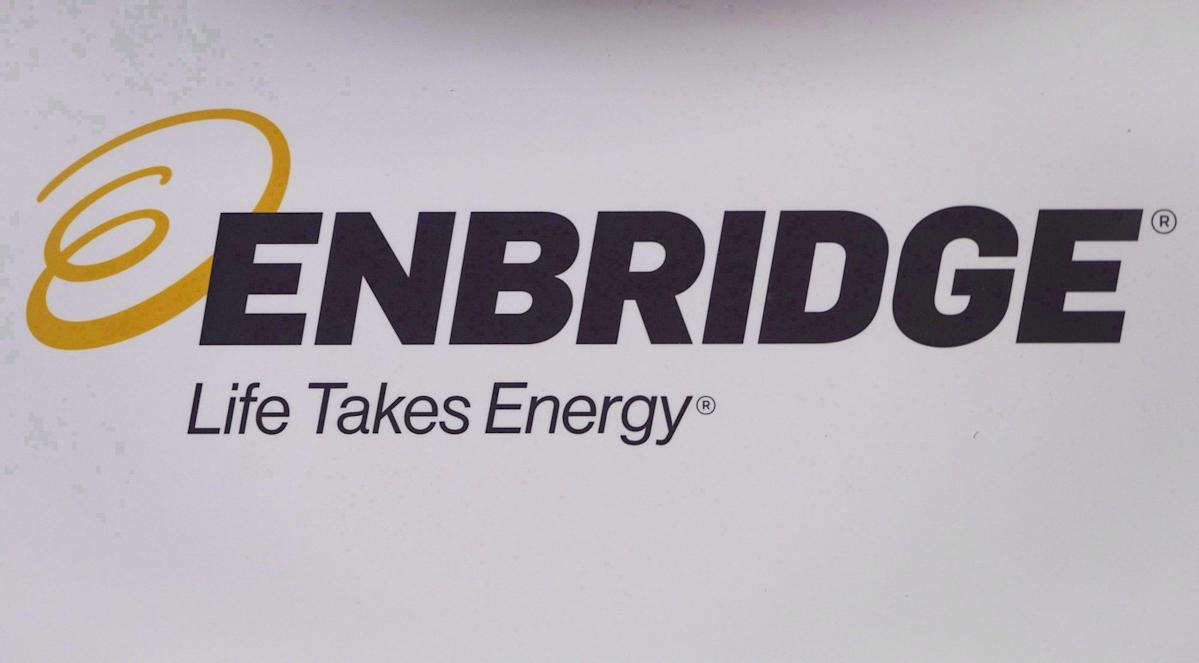CALGARY — Enbridge Inc. says it added $3 billion in new growth projects to its roster south of the border during the third quarter, while in Canada it has no immediate plans to make a pitch to the new federal Major Projects Office.
The Calgary-based energy infrastructure giant says during the third quarter, it gave the green light to its US$500-million Southern Illinois Connector project. Through expansions to existing pipelines, that project would enable 100,000 barrels per day of oilsands crude to flow to Texas.
“Maybe in baseball terms, that’s our lead off hitter and it’s now on base,” said Colin Gruending, president of liquids pipelines, on a conference call to discuss third-quarter results.
The U.S. market remains attractive for Canadian crude, he said.
“South is where it’s at. Our customers prefer that direction.”
Many companies have U.S. refinery interests that are integrated with their oilsands production and there’s less competition nowadays from Venezulan and Mexican heavy oil imports into the U.S., Gruending added.
Enbridge also sanctioned expansions to its Canyon and Eiger pipelines, as well as additions to natural gas storage and transmission operations during the quarter.
Continuing with the baseball analogies, Gruending said the first phase of Enbridge’s Canadian Mainline Optimization is “at the plate” and a second tranche is “in the batter’s box.”
The Canadian Mainline is a vast network of crude pipelines spanning the country and connecting to points south. Enbridge announced plans earlier this year to invest $2 billion through 2028 on improvements to the system to boost throughput.
The first 150,000-barrel-per-day phase is in the final stages of customer negotiations. The company is on track to make a final investment decision this quarter, with the expansion coming into service in 2027.
A second Mainline expansion phase would add another 250,000 barrels per day of capacity, and Enbridge expects to gauge customer interest early in the new year.
Chief executive Greg Ebel said it makes sense to expand what Enbridge already has instead of building something brand new.
“Relative to potential greenfield projects that would require significant energy policy change, these brownfield opportunities offer the quickest and most cost-effective way to add close to 500,000 barrels a day of capacity to satisfy the near-term production increases forecasted out of the (Western Canadian Sedimentary Basin),” Ebel told analysts on a conference call Friday.
Legislation passed earlier this year established a new office based in Calgary to review projects deemed in Canada’s national interest on an expedited timeline. Alberta Premier Danielle Smith is among those clamouring for a new West Coast oil pipeline being added to the list, and her government is working on putting together a proposal.
Enbridge, Canada’s biggest crude oil shipper, is only advising on that effort and has no plans of its own to make a pitch to the Major Projects Office, Ebel said.
“It’s great that it’s set up. Hopefully that’ll be helpful for those national interest projects,” Ebel said.
“But all the things we’re talking about are short-cycle, relatively permit-light, and so we haven’t seen the need to go down that route.”
Earlier Friday, Enbridge reported its third-quarter profit fell compared with a year ago as its revenue also edged lower.
It earned $682 million attributable to common shareholders or 30 cents per share for the quarter ended Sept. 30. That compared with a profit of $1.29 billion or 59 cents per share in the same quarter last year.
On an adjusted basis, Enbridge says it earned 46 cents per share in its latest quarter, down from an adjusted profit of 55 cents per share a year ago. The average analyst estimate had been for an adjusted profit of 51 cents per share, according to LSEG Data & Analytics.
Operating revenue totalled $14.64 billion, down from $14.88 billion in the same quarter last year.
This report by The Canadian Press was first published Nov. 7, 2025.
Companies in this story: (TSX:ENB)
Lauren Krugel, The Canadian Press

